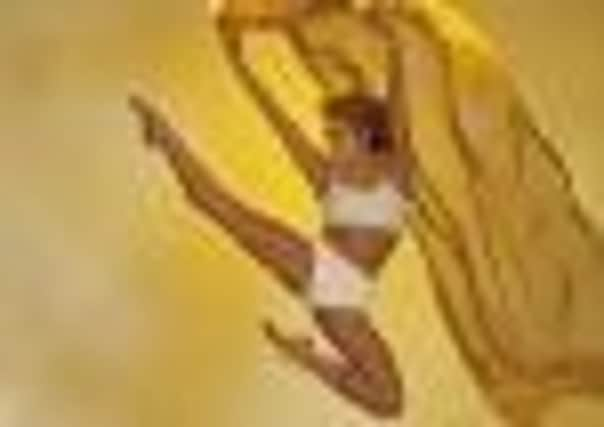Rambert Dance’s eclectic mix blends well together


IT’S an hour before curtain up, and Mark Baldwin, artistic director of Rambert Dance Company, is talking to a rapt audience. Collaboration, he tells them, has been the cornerstone of Rambert since its debut performance in 1926.
A short while later, Baldwin’s words become reality when the dancers take to the stage to perform Irish choreographer Marguerite Donlon’s Labyrinth of Love – an illustration of successful collaboration if ever there was one.
Advertisement
Hide AdWith visual design by British artist Mat Collishaw and music by Grammy Award-winning composer Michael Daugherty, set to poetry and prose by female writers throughout history, Labyrinth of Love is quite the melting pot. What surprises most, though, is how well these very distinct artistic elements sit alongside each other.
“That was absolutely my first priority,” says Donlon in her soft brogue. “When I’m doing a collaboration I try to knit things together. So even if you have three very different genres and opinions, the task of the leader of the project is to bring them together, so the audience can feel the connections.”
An extra layer comes in the form of Conor Murphy’s costume design, which finds the dancers wearing very little to start with, then covered in small pieces of white material. From an audience perspective, minimal costumes equal more opportunities to see how a dancer’s body works – followed by outfits that catch the light and move with a life of their own. But, as with every artistic decision, there’s much more to it than that.
“The bits of material represent blank pieces of paper,’ explains Donlon. “Before you write a poem, you start with an empty page. When the dancers stand still, they’re basically blank pieces of paper – but as soon as they move, the paper starts to have its own poetic life through their movement. Of course I don’t know if the audience gets that – but that was the thought process behind it.”
One of the Young British Artists who took the visual art scene by storm in the late 1980s, Mat Collishaw is known for his uncompromising video and photography. But when you’re providing the background for a group of dancers, being centre stage yourself isn’t an option.
“It was such a pleasure to work with Mat, because there was never a point when he tried to push his work first,” says Donlon. “We all knew that the dancers had to be in the foreground. I work with video a lot, and it only makes sense if it enhances the movement.”
Advertisement
Hide AdThe solution was to use a range of images, moving in slow motion or panning out to reveal larger versions, so that the audience can register Collishaw’s work but not be consumed by it. Because as Donlon says, “if it starts to take over, there’s a problem.”
If Labyrinth of Love is already sounding full, then wait, there’s more. Michael Daugherty’s score is sung live by an operatic vocalist, who weaves in and out of the dancers across the stage. Sopranos Kirsty Hopkins and Sarah Gabriel are taking the role in turns throughout Rambert’s UK tour, and as with the visual element, Donlon had to work closely with them to keep the emphasis in the right place.
Advertisement
Hide Ad“When I met Kirsty and Sarah, I was really impressed with them,” she says. “Not just because of how they sang, but they were so open and willing to be on stage with the dancers – they blended in very well and looked like one of the team. So that’s when I first thought it would be nice to include them, to allow the audience to see where the voice is coming from. But again it was a great balancing act to feature the singer, but take care they don’t get the entire focus.”
Spanning 2,000 years, the text sung during the show includes sonnets from Victorian English poet Elizabeth Barrett Browning, an ancient fragment from Greek lyric poet Sappho, and Liz’s Lament, a reflection on marriage to Richard Burton by Elizabeth Taylor. Diverse works, with one common factor – love. The way Daugherty interpreted the text led to a musical score that is at turns poignant, sensual and fun, just like the emotion behind it.
“Love is everything – it’s funny, sad, tragic, beautiful,” says Donlon. “Some of the music Michael composed was playful, which was great because it gave me another colour to the whole aspect of love. I enjoy a bit of humour because for me, dance on stage represents life, and life is not just one way.”
The singers were present throughout the rehearsal process, which not only meant they became integral to the choreography, but it allowed the dancers to fully absorb the music and text. That, and the very personal subject matter of love won and lost, has resulted in the dancers giving even more of themselves than usual.
“As a choreographer I’m a communicator,” says Donlon. “So I want to create a piece that will speak to the people who are watching it. But to do that, I need the dancers to be convinced about what they’re doing, because otherwise the audience isn’t going to be.”
• Rambert Dance Company, Theatre Royal, Glasgow, today until Saturday; Eden Court Theatre, Inverness, 19-20 March; Edinburgh Festival Theatre, 9-10 April. www.rambert.org.uk